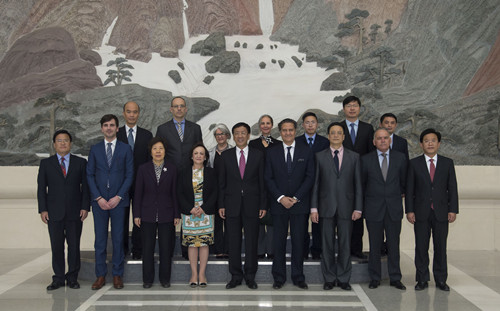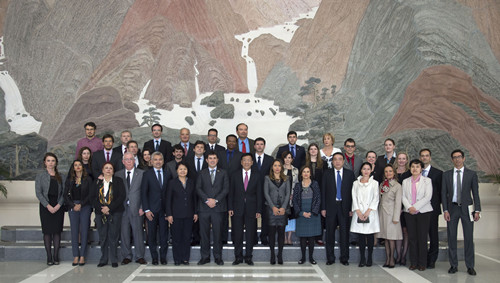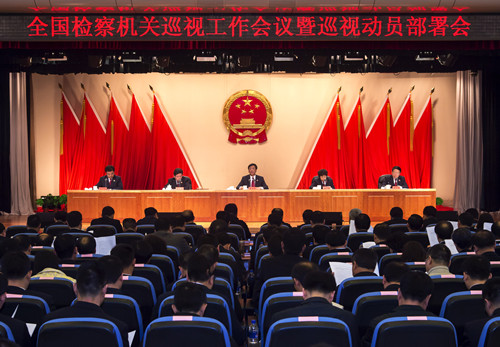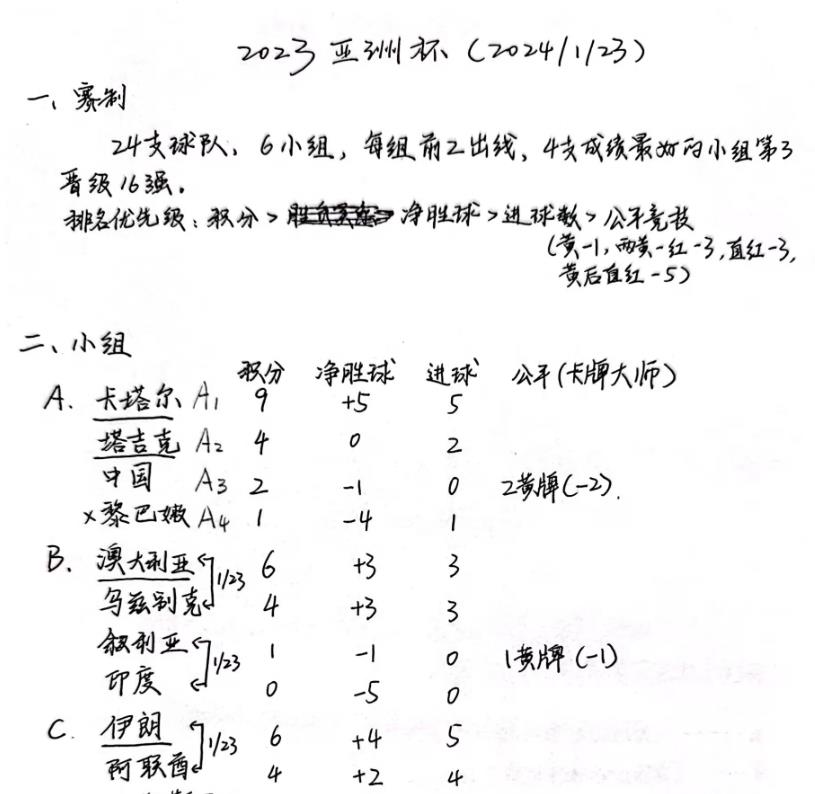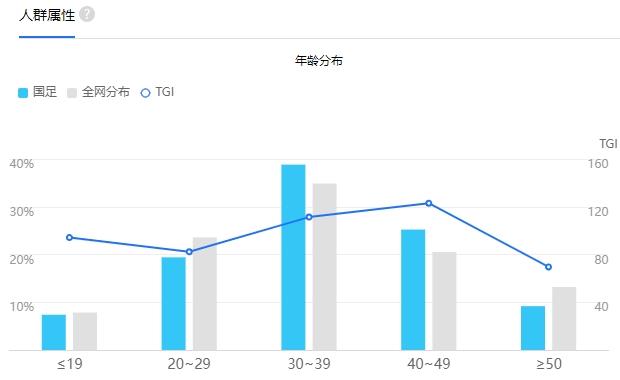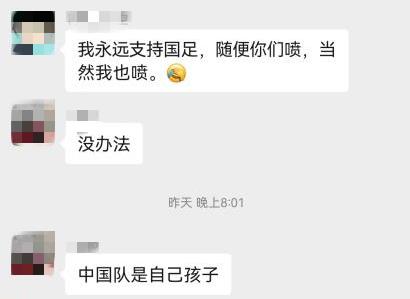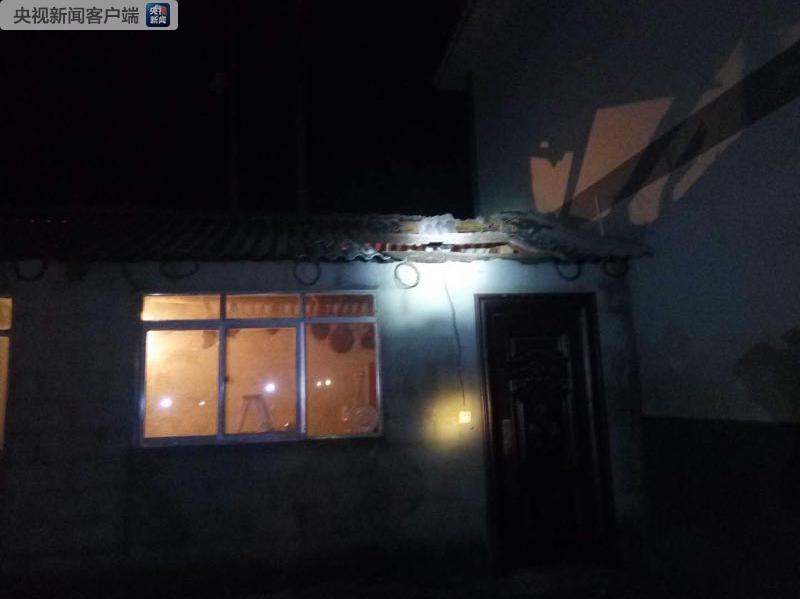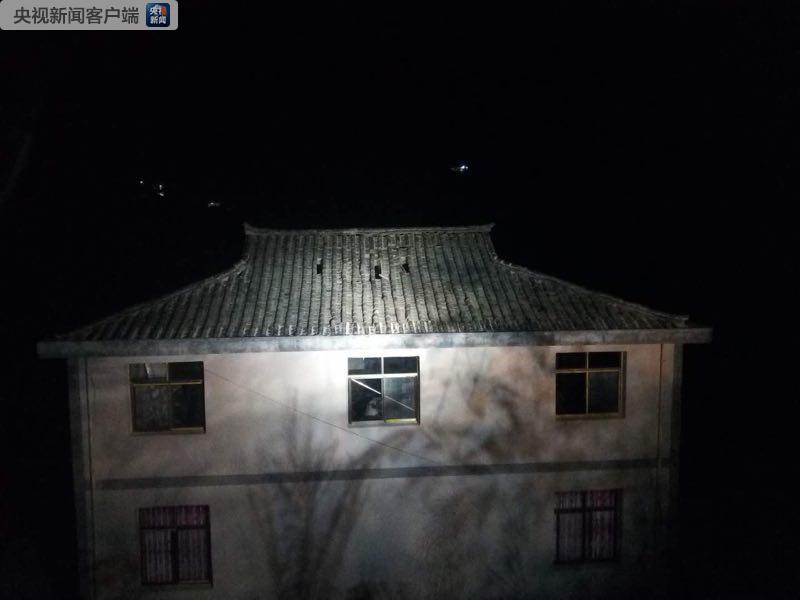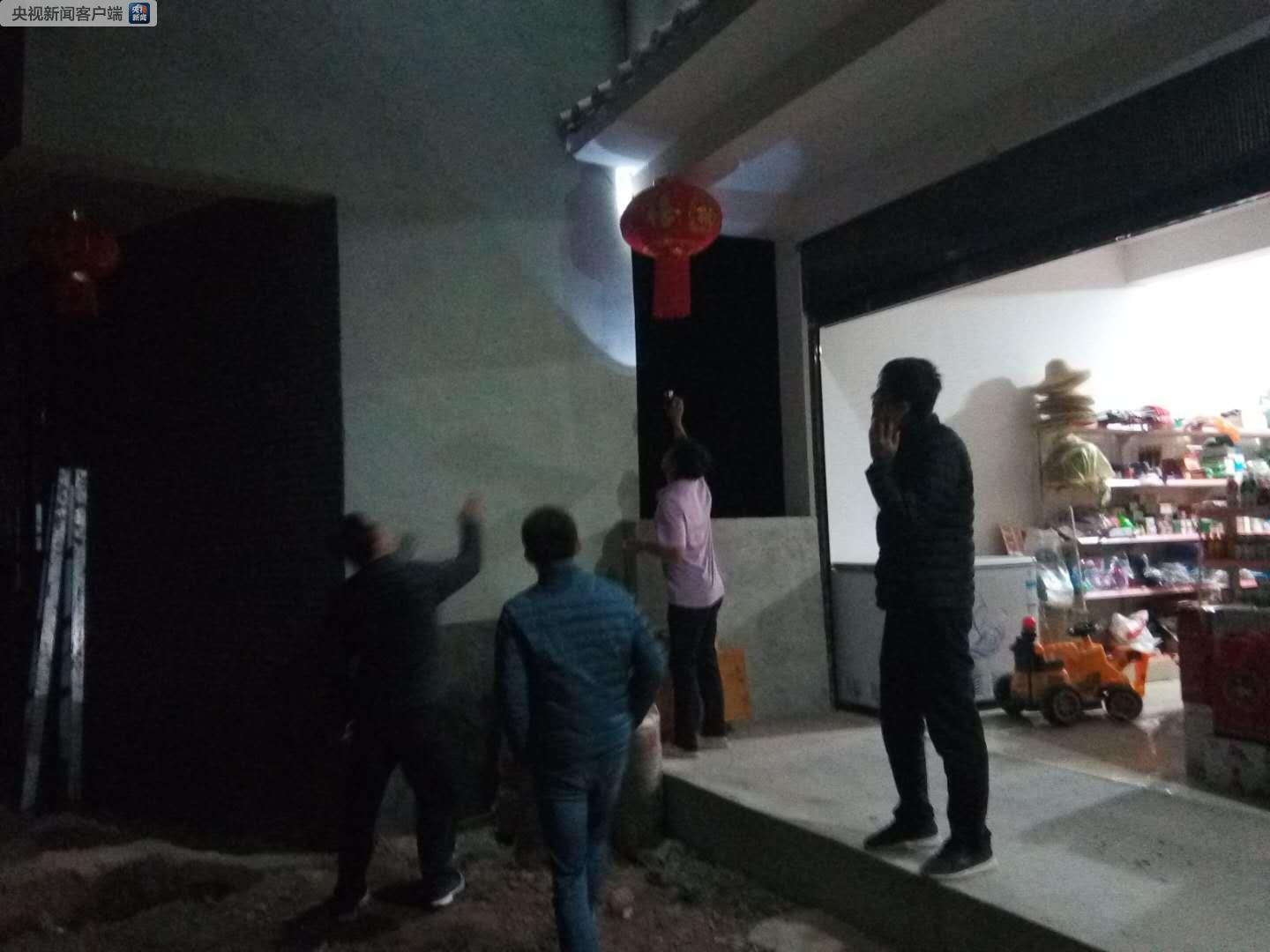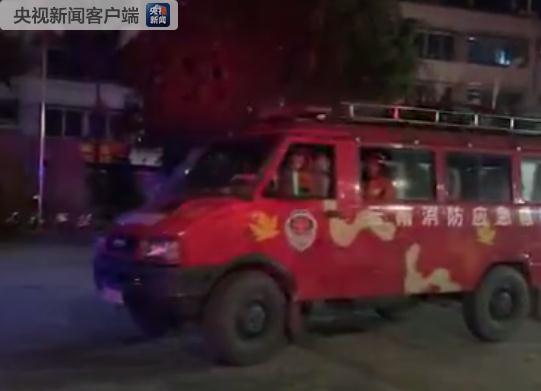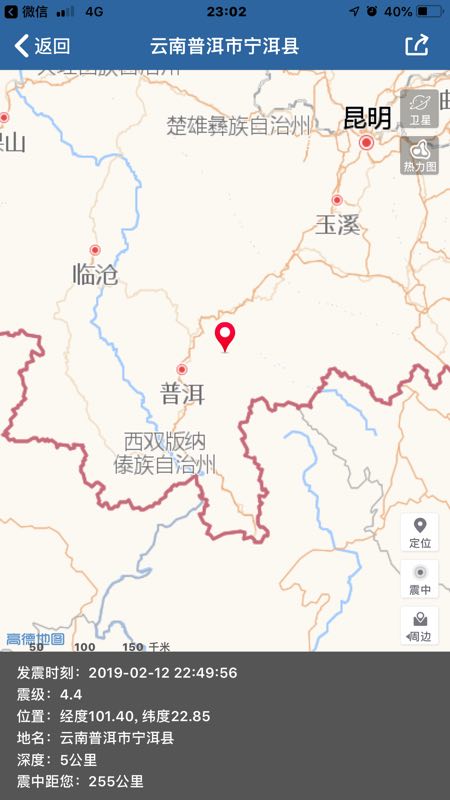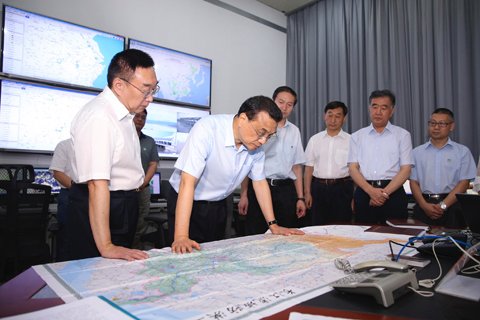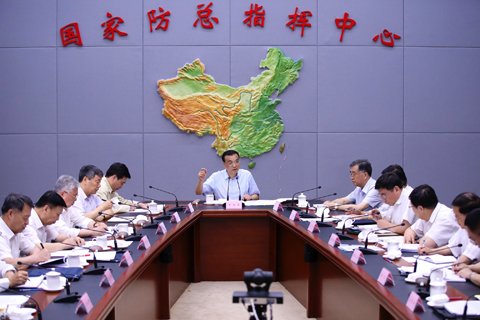Wen/Shi Nengcheng
Core tip:Panic, anxiety, parting, tears, retrogression and watchfulness were many key words when COVID-19 ravaged Hubei in 2020. The epidemic overwhelmed the city and was full of sadness, but love and hope spread faster than the epidemic. As a result, an unprecedented war epidemic started. At this time, what are the monks in Hubei, which is in the hardest hit area? What are you doing? Shi Nengcheng, Deputy Secretary-General of the Buddhist Association of Xianning City, Hubei Province and President of the Buddhist Association of Xian ‘an District, wrote an article reviewing the reaction of the Buddhist community in Xianning during the two-month war and epidemic. Master Nengcheng recorded the actions and feelings of the "monks" in front of the disaster with completely documentary brushstrokes. There are more things to put on the cassock, and the mountain residence does not dare to forget the country. This is a seemingly trivial word, but everything and everyone recorded here will be recorded in the chronicle of Buddhism, which will be passed down to future generations and warm the world.
On January 23,The Buddhist Association held an emergency meeting, and I realized something was wrong.
At about 17: 00 on January 23rd, 2020, I received a notice from Master Guo Hao, the resident vice president of Xianning Buddhist Association, asking Xian ‘an Buddhist Association to attend the "Emergency Meeting of the President of Xianning Buddhist Association" held in Qianshan Temple. I live in a temple far from the temple area, and every time I go to the city for office or attend a meeting, I have to drive for an hour. In Xian ‘an District, the Buddhist Association in Xian ‘an District has not implemented a good office space, which also brought great inconvenience to the later work. Along the way, I kept getting calls urging whether I had entered the city. Buddha and Bodhisattva, you know, I was driving at 70 mph, and I would get a ticket from a lovely policeman soon. Right now, I realized something was wrong. Because the day before this, my master, Master Wu Zheng, the abbot of Wuxiang Temple in Xian ‘an, asked to cancel all the reception and Dharma arrangements during the Spring Festival. I guess that there has been a new development in the novel coronavirus epidemic in Wuhan.
On the evening of January 23rd, the meeting lasted until 9 o’clock in the evening, and the Xianning Buddhist Association officially issued a notice on "doing a good job in the prevention and control of pneumonia in novel coronavirus" according to the notice of the Citizens’ Committee. At the president’s office meeting, Master Xin Ping and the presidents have been discussing how to face this epidemic and how to protect the safety of faculty. Finally, the president’s office meeting unified its thinking, and according to the instructions of the Citizens’ Religious Affairs Committee, it required all Buddhist sites in the city to immediately stop all religious activities, persuade people from suspected epidemic areas to return, and do a good job in registration and investigation. At the same time, it required all teaching staff not to take leave to go out and do a good job in site health and safety. All cities and counties are required to set up special personnel to stay on duty. When problems are found, report to the Municipal Buddhist Association and the local Party committee and government at the first time. In the evening, the Buddhist associations in counties and cities were asked to make arrangements at the first time and implement the notice to the person in charge of each place.
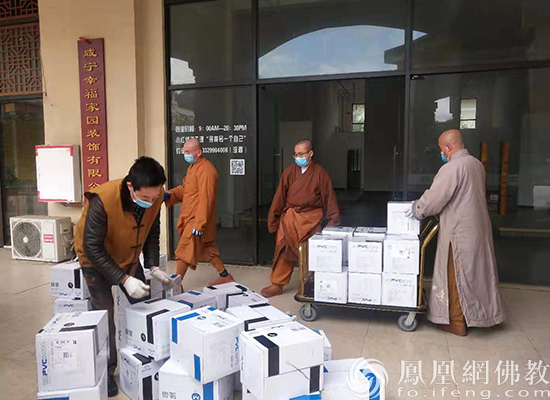
Image source: provided by Master Nengcheng of Buddhism of Phoenix Net.
Then the notices and learning materials from provinces, municipalities and district governments were announced and released one after another. The epidemic prevention work in Xianning City has officially reached a very critical moment. In order to ensure that all the places are carried out as required, leaders of the Religious Affairs Bureau of Xian ‘an District and members of the Buddhist Association team visited the places for inspection wearing masks and spraying disinfectant. The monasteries in Xian ‘an District supervised by me all posted announcements, closed doors, stopped people from entering and leaving, and closed monasteries as required. At noon on the 24th, it was all finished.
On January 24,The heads of Buddhist associations at all levels look for materials around the world.
The work of the Buddhist Association has just begun. The Xianning Buddhist Association and the People’s Religious Affairs Bureau of Xian ‘an District require a daily report. Xian ‘an District requires all monasteries to report whether there are foreign personnel, gate closure, living materials and epidemic prevention materials, whether there are epidemics such as fever, whether there are temporary residents, the reasons for their temporary residents, the temporary residence time and whether the signs are normal every day. Fortunately, from January 24th to mid-March, the staff of Buddhist monasteries in Xian ‘an District were very stable, and the morning and evening classes and the daily work of monasteries were not affected.
However, we did not reserve epidemic prevention materials in the early stage of the epidemic. Xianning Buddhist Association, including the Buddhist Association in my district, has been in contact with various materials for Wuhan epidemic area in the early stage, including Miao Liang, president of the Buddhist Association, who also took the lead in donating money to help Wuhan. All materials are given priority to Wuhan, but they just forget themselves. When the epidemic situation in Xianning began to change, we found that it was more and more difficult for epidemic prevention materials to come in. Buddhist associations in all counties and cities in the city feel the same way. There is no way to supply Buddhist places with materials, especially masks and disinfectant, so that there is a shortage of living materials later.
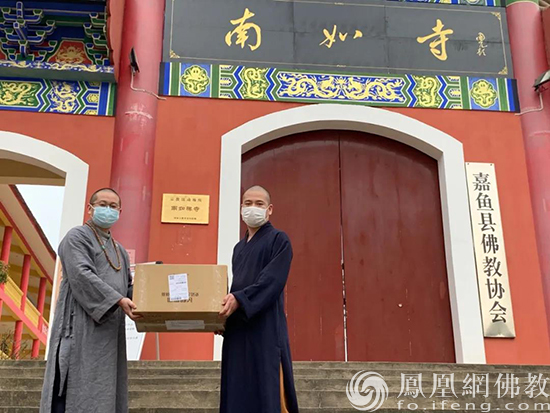
During that time, in the WeChat group of members of the Xianning Buddhist Association, the discussion was at one or two o’clock in the evening, and the leaders of the Citizens’ Religious Committee had been guiding the work in the group, caring about the safety, epidemic situation and living conditions of religious sites in various districts, counties and cities. Constantly encourage and support all the staff. It has been repeatedly said that the United Front Work Department is everyone’s backer, and it is difficult to find the party Committee and government.
In the following days, the presidents of the Buddhist Association showed their talents. They searched everywhere for epidemic prevention materials for Wuhan, Xianning and Hubei, and found domestic products from the province and overseas products from the country. Later donated materials were sent to Xianning from Shanghai, Beijing, Taiwan Province and even overseas. As long as there are materials, no matter how much it costs, we must buy them back. As long as it is needed by the epidemic, we will try our best to win them.
The keynote set by the meeting of the team of Xianning Buddhist Association is that the Buddhist teaching staff in Xianning should achieve zero infection, and all monasteries in Xianning should be strictly guarded against opening doors. Let’s work together to overcome difficulties. Master Xin Ping, the executive vice president of the Municipal Buddhist Association, wrote eight words for this "war epidemic" in which the enemy could not be seen, "Do your part, and your conscience will not lose". Yes, faculty members, in the epidemic, still don’t forget all beings. As President Zhengci of the Provincial Buddhist Association said: It is more important to put on the cassock, because you are me. Shanju didn’t dare to forget worrying about the country.
On January 25th, in the early morning of New Year’s Day, I received a message from teacher Ke Zhang.
At 00: 37 on January 25th, 2020, Ke Zhang, a Buddhist teacher from Phoenix.com, sent me a message: "Master, be well. How is your temple now? Can I help you? We are trying to help. " It is such a warm word that in the early morning of New Year’s Day, it began to warm the Buddhist community in Xianning and the hearts of Xianning people.
Master Xinping knows that I am an old acquaintance with Mr. Cui Mingchen, the editor-in-chief of Buddhism at Phoenix.com, and that charitable organizations like Huihai Public Welfare are concerned about the epidemic situation in Wuhan and Xianning. Let me contact Phoenix Buddhism first to see if I can get more help from the periphery. And Ke Zhang, a Buddhist teacher from Phoenix.com, also wrote to ask about the epidemic situation in our city for the first time. I told you the truth. Although the number of our city was small at that time according to the confirmed data, Xian ‘an District of our city borders on Wuhan City, and National Highway 107 runs through the center of Xian ‘an District. Many migrant workers in Xianning work in Wuhan. Moreover, I went home for the New Year before Wuhan was closed. The epidemic situation in Xianning city must be very serious.
On the first day of New Year’s Day, there was a constant stream of information in the office group of Xianning Buddhist Association. Ensuring the safety of monasteries and teaching staff is a top priority, but the bigger thing is to take responsibility. I don’t talk much in the group. When the leaders of the City Buddhist Association need me to make a statement, I will talk about my opinion. When there is something I need to do, I will do it at once.
At that time, early in the morning, I immediately reported to Master Xinping, the vice president of the Standing Committee of Xianning Buddhist Association, the information on the assistance provided by Phoenix. com Buddhist Program to Xianning Buddhist community. President Xinping’s first reaction was that no matter what documents and procedures are needed, we must fully cooperate and maintain this lifeline of donation.
At that time, I learned that Master Wu Zheng, the vice president, wanted to donate medical protective clothing to the hospital. When there was a purchase channel, I immediately contacted Master Wu Zheng and donated a batch of protective clothing to the hospital in Xianning. I remember that Master Xin Ping said that at all costs, I personally would like to donate a batch of protective clothing to the hospital to save the lives of these angels in white. At that time, protective clothing was already a very scarce material. It’s not easy to buy. When we were glad to find a batch of medical materials, Master Wu Zheng sent a message that the protective clothing was European standard, not national standard, and the hospital could not accept it. At this point, I can only do it.
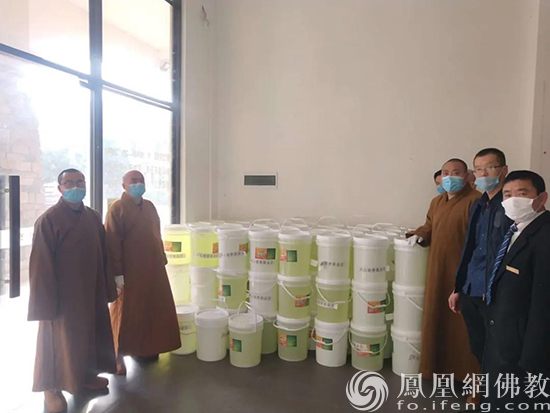
I could see at that time that Master Xinping was disappointed. I meditated for a long time outside the window. In fact, I have been working as an assistant to Master Xin Ping for seven years, and it is not an easy task to be his assistant. I don’t know if Yunnan people all have such a temper, and they are the same as firecrackers. They confessed one thing and didn’t implement the reply. Your WeChat and phone can make him stop until there is no electricity.
I remember January 25th, the first day of New Year’s Day. It was raining early that morning, and the sky was not very bright. I don’t know why it felt really cold. At the request of the Religious Affairs Bureau of Xian ‘an District, the heads of the three major religious groups in this district and the leaders of the Religious Affairs Bureau went to various places to check whether the venues for religious activities were closed. Implement the situation of living and learning difficulties in the workplace. We went to the door of each temple to check and looked at the closed door. There were two kinds of feelings. One was that it was closed, which meant it was safe and isolated from the virus. Another kind of mood is, how should the monks in the temple live during the Spring Festival? Every time we go to a temple, we will say through the door: don’t open the door, just look outside. After the inspection, when I returned to the temple, I sprayed myself up and down with alcohol at the door for disinfection. When communicating with the monks in the temple, they all talk through the door.

Image source: provided by Master Nengcheng of Buddhism of Phoenix Net.
Since January 25th, Xianning Buddhist Association has been connected with Phoenix Net Buddhism and Lingshan Charity Foundation, and established several different groups. Why are there several different groups? Because different suppliers and different donors need an independent working group to discuss. I remember building six or seven groups before and after, until finally, it was centralized into "Hubei Aid-Buddhist Emergency Team". At the earliest, this group was a group of donation information between Xianning Buddhist Association and Phoenix Buddhism, and later it gradually expanded into a group of donation information between Hubei Buddhist Association and Xianning Buddhist Association and Phoenix Buddhism and Lingshan Charity Foundation.
Sleepless buying supplies, in the face of the epidemic, we must not wait and die.
At that time, the search for materials had reached a state of madness. Master Xin Ping and the Buddhist teachers of Fenghuang.com discussed how to find mask disinfectant and medical supplies. Later, several groups of different suppliers were joined one after another. The so-called suppliers in the extraordinary period were hard to distinguish between true and false, and some suppliers could not provide product qualifications, some were middlemen at all, and some sellers were unwilling to give invoices.
In several groups, the warmest words I heard were what Ke Zhang, a Buddhist teacher from Phoenix.com, said: "We want as much as we have.". The most heartfelt thing I heard was "I’m sorry, all the goods have just been sold out." When I heard the most just words, Master Xinping said, "This is no time for you to make a fortune.". When I heard the most responsible words, Master Xinping said, "I will fully coordinate what I need to do!" You may not understand that it is not easy for relief supplies to enter Hubei when the whole province is blocked. For this reason, teachers Cui Mingchen and Ke Zhang of Fenghuang. com Buddhism, teachers Wang Wen and Fei Yingyi of Lingshan Charity Foundation, including the leaders of the office of the Provincial Buddhist Association, have made great efforts.
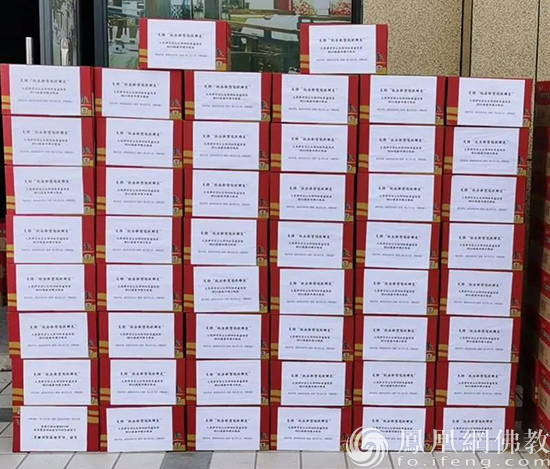
I remember that when the epidemic just exploded, I used to read information with my mobile phone for 24 hours. It is no exaggeration to say that I should pay attention to it even when I went to the bathroom. I remember that I asked Master Xinping a sentence at that time: How can you always reply to the information in this WeChat group at the first time? He replied: I dare not sleep, I am afraid that I will miss the information and the materials will not come to Xianning. Being able to arrive in Xianning one minute earlier, the hospitals and frontline workers fighting the epidemic in Xianning will be less dangerous, and our fight against the epidemic will be less difficult. I asked him how long you haven’t slept. He said he hadn’t slept for three days.
Zhong Nanshan said: An epidemic has made us understand that living in the world is nothing but life and death, and everything is nothing but health. Living well is happiness. I didn’t live in Wuhan, so I couldn’t understand the mood of Wuhan people at that time. But I’m in the peripheral city of Wuhan, and I usually don’t even dare to breathe hard, for fear of a virus around me, let alone my friends living in Wuhan. They must be frightened and anxious day and night, and their mentality must burst more than mine, the kind that bursts in situ.
Master Xin Ping said: In the face of the epidemic, we must not sit still and wait for death, let alone be insensitive when all sentient beings are suffering. What’s more, we are still a monk, and we are always compassionate, helping all sentient beings and saving the suffering. These are not simple slogans; In the face of the grim situation of the current national epidemic, we Buddhist disciples should actively participate in this war epidemic with practical actions, and better demonstrate the spirit of Buddhism’s lack of compassion and compassion.
During the rescue, we experienced too many incredible things.
At the beginning of the campaign, we responded to the call of the United Front Work Department of Xian ‘an District Committee, mobilized all the teaching staff and believers, raised 120,000 yuan in a short time, and donated it to Xian ‘an Charity Association at the first time. Among them, we have experienced too many incredible things, and we have seen the care and love of all the teachers of Buddhism in Phoenix. After seeing Mr. Cui Mingchen, Mr. Ke Zhang and Mr. Baohua Li constantly contacting mask manufacturers, protective clothing and relief materials day by day, you can think of Master Xin Ping and the Buddhist teachers of Phoenix Net. At 2 o’clock in the morning, we are still discussing which manufacturer can buy the materials and how to send them to Hubei. Wuhan is closed, and Xianning is the only way. Materials can’t get in, especially masks and disinfectant. What shall we do?
There are many second-hand dealers selling medical materials on the Internet. When the epidemic broke out, we were very worried about being cheated by purchasing materials with donations. All kinds of masks and protective clothing are flooded with information on the Internet. Master Xin Ping and the Buddhist teachers of Fenghuang. com always carefully understand the qualifications, standards and origin of medical materials, and must ensure safety and legality. In order to ensure the legal distribution and donation of materials, Lingshan Charity Foundation also signed a memorandum of cooperation with Hubei Red Cross Society. This also laid a good foundation for the later delivery of materials to various Buddhist receiving points in Hubei Province.
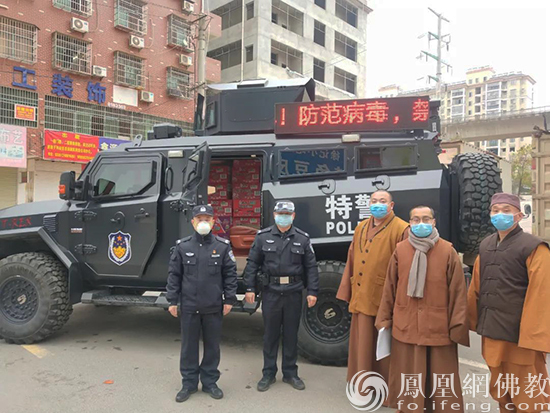
I remember that Wuhan announced the closure of the city, and Xianning will also be closed between the cities. There is a young male monk in our temple. They started a charity donation group to look for materials in various parts of the country and then donate them to hospitals in need.
One day, they received a picture of the hospital looking for epidemic prevention materials from a person named "Accepting Love Donation" on WeChat, which listed the urgent medical materials and contact information. The young man contacted the person who asked for help by phone, and made an appointment to donate love materials at the hospital gate. In the meantime, the young man felt a little strange. Why did the micro-signal write "accept love donation"? Shouldn’t this be someone’s name or screen name, or hospital name? With doubts in his heart, he went to the hospital where the materials were handed over in advance and found relevant personnel to understand the situation. Only then did I find out that the so-called "accepting love donation" person PS his own information on the picture of the hospital asking for help, in an attempt to impersonate the medical materials donated to the hospital in this way.
Of course, this deception made the clever Buddhist disciples see through it, and also played a vigilant role in the major WeChat groups donated by love. And this Buddhist disciple has been doing voluntary work silently. From Vulcan Mountain to Raytheon Mountain and then to the volunteer activities of medical supplies and living materials in major hospitals in Wuhan, there is no shortage of him. Half a month ago, he called me and said, Master, are you all right? I miss you guys so much. I told him that you were doing things that the masters could not do, and the masters praised you. Pay attention to safety!

During the epidemic, it was safe for us not to contact outsiders in the temple, but when we saw the hospital being in a hurry again and again and saw the huge increase in the number of confirmed cases, our hearts were very heavy. First, we must not increase the burden on the society. We must keep the monasteries and the safety of the teaching staff. Second, although we are monks, there are all our relatives, friends and family outside. We can’t sit idly by, and we can’t and can’t turn a blind eye. We don’t let go of the information of a mask, because even a mask can reduce the chance that a person may be infected. I used to think I was in a good mood. But every time I see friends I know on WeChat, their relatives are diagnosed, and my heart is full of embarrassment. I really don’t want to see that scene. Of course, there were all kinds of feelings and feelings during the war. I used to be proud that I am Chinese, and now I am even more proud that I am Chinese.
We received the first batch of social donations, and the most beautiful "retrograde" is in front of us.
With the efforts of all parties and the contact of Master Xinping, the Buddhist community in our city received the first batch of relief materials on behalf of the society. This material was donated by Mr. Li from Beijing, California Beef Noodle King through Phoenix Net Buddhism, with a value of 200,000 yuan. On January 30th, at the critical juncture of the epidemic, these precious materials arrived in Xianning, and we distributed them to frontline anti-epidemic workers such as hospitals, armed police and public security at the first time. What moved me was the unnamed truck driver, who knew that there were all kinds of risks in coming to the epidemic area in Hubei, but decided to drive a long-distance bus for 16 hours to deliver the materials to Xianning, and immediately returned to Beijing and isolated himself for 14 days. This is an amazing "retrograde".
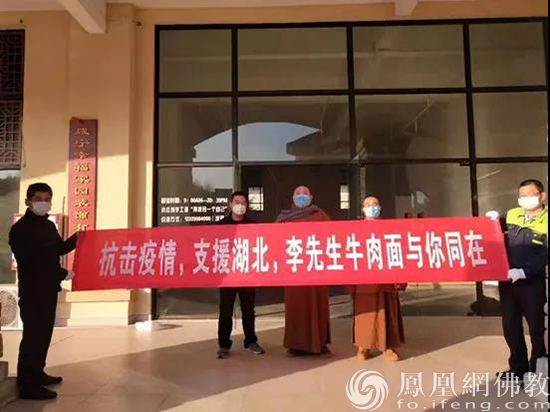
Master Guo Hao of Xianning Buddhist Association is also the most beautiful "retrograde". When the epidemic broke out, he led the masters and volunteers of Qianshan Temple to complete one dangerous and particularly physical work after another, carrying materials and distributing materials. Because I was restricted from traveling, I could only see these two or three people in the work group, and three or five people carried heavy goods. I really wish I could do my best to help, so that my conscience would not lose. Master Xin Liang, Vice President of the Buddhist Association of Xian ‘an District, Hu Jun, Secretary General and Li Tianhong, Deputy Secretary General, all distributed epidemic prevention materials and living materials to all places at the first time. Master Qingyun and Master Yongxin couldn’t go out because the road was blocked, but they were always worried about the development of the epidemic and organized fundraising and self-help many times. I really saw the great love of Buddhism and benevolence, and it was great to have them in the Buddhist Association!
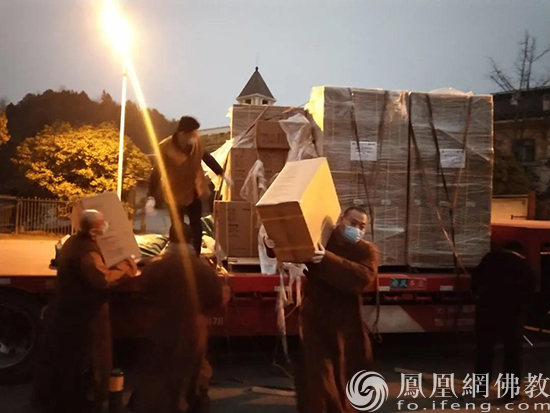
Later, with the help of Fenghuang. com Buddhism and Lingshan Charity Foundation, the Buddhist Association got a car full of disinfectant, and Master Xin Ping contacted Master Ben Chao of Xiantao to buy 100,000 disposable medical masks. Section Chief Li of the United Front Work Department of the Municipal Party Committee personally took the car to Xiantao to pick up the goods, and there was only a thin mask, so he went to pick up the goods without protective clothing. We were really worried. I think this mask can meet the epidemic prevention needs of teaching staff and places in our city, but after it was taken back, the Buddhist Association of the city discussed and weighed that the demand for masks can be delayed as long as the temple is closed, as long as the door is not opened, it is still relatively safe, but the frontline staff are in urgent need of this batch of materials, so the Buddhist Association of the city donated all the masks to the new coronavirus epidemic prevention headquarters of the city. Even the 60,000 masks applied by the Buddhist Association of the city to Wuxi Lingshan Charity Foundation were all transferred to the Huangmei epidemic area because of the emergency situation in Huangmei area.
On January 30th, 12,000 barrels of fresh noodles were donated to Xianning epidemic area; on January 31st, 100,000 medical masks were purchased; on February 1st, Wuxi Lingshan Charity Foundation donated 2 tons of disinfectant; on February 2nd, Tongshan County People’s Hospital received 30 air purifiers donated by Beiqing think tank through the assistance of the Municipal Buddhist Association; on February 3rd, Wuxi Lingshan Charity Foundation donated 10 80,000 yuan ventilators to Xianning First People’s Hospital; on February 3rd, Tongcheng Tongren Hospital received 10 air purifiers donated by Beijing think tank; and Hubei Science and Technology Co., Ltd.
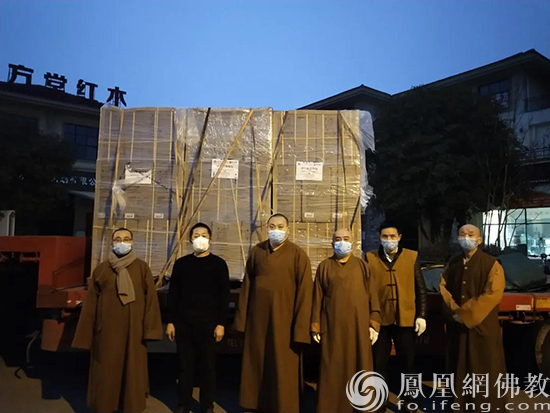
Forgive me for being lazy and omitting details. We have donated, contacted, collected and distributed all kinds of relief materials, including living materials and medical protection supplies for urban and rural residents, faculty and frontline staff in the later period. According to incomplete statistics, by this time, the Buddhist community in the city has mobilized and persuaded more than 4.8 million yuan in materials and donations.
The standing resident work of Xianning Buddhist Association began in the second half of 2019, and Master Xin Ping has always been the main focus, and Master Guo Hao is working in the resident office. These two wizards are meticulous in managing and contacting things. From then on, Master Xinping’s work was even busier, and he reported the collection of materials to the presidents of the Buddhist Association in the group every day. They are really busy and tired.
When it was seen that the staff and volunteers on duty at the card point of the District Religious Affairs Bureau only had a layer of mask protection, the Buddhist Association of our district launched a second special fundraising, specifically to raise protective clothing and daily necessities for front-line staff. For the protection of Buddha and Bodhisattva, we found a batch, but the protective clothing did not meet the national standard and could not be donated to the hospital, so it was used by the frontline staff. It’s a comfort to me. It’s better to wear it than not to wear it. People at that moment, as long as money can buy, how much the price, are willing. Because these staff and volunteers are on the front line to protect us. Two shifts a day, 12 hours a shift. Eating is also a problem. Eating instant noodles every day is really hard.
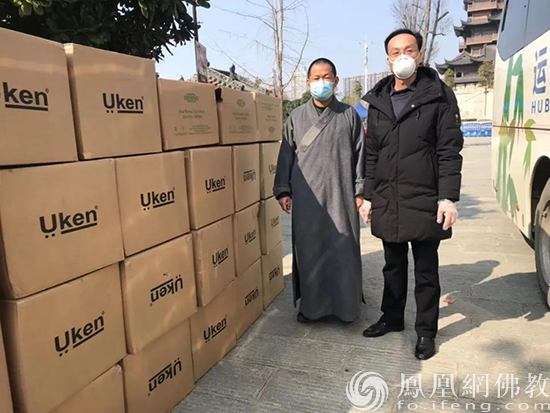
I am familiar with Director Zheng and Director Yang of the Religious Affairs Bureau of Xian ‘an District. They have always been concerned about the safety of our teaching staff and our life shopping. Usually, which temple has a demand, a phone call, the District People’s Religious Affairs Bureau immediately contacted the local United Front Committee and tried its best to solve it. During the epidemic, the warmest words I heard were: as long as you have a bite to eat, don’t go out, and peace comes first.
The shortage of materials has held back the country, and our temple has also eaten disaster relief dishes.
My temple is located in Wuxiang Temple in the easternmost part of Shuangxiqiao Town. It’s almost out of Xian ‘an District, and the traffic is far away. It’s not very convenient to buy materials at ordinary times. Fortunately, years ago, the abbot Master Wu Zheng and the Buddhist Bodhisattvas sent some rice, and at the same time, two vegetable fields lived in the temple reservation. In terms of self-support, it is much better than many temples. Eat enough, survival is not a problem. But later, it gradually began to be short of materials. After learning about it, the Party Committee and government of Shuangxiqiao Town distributed disaster relief dishes from the people of Yunnan Province to Wuxiang Temple, and Li Rong’s village party secretary sent tofu and vegetables several times. When it was received, the masters of the temple said, "I’m sorry, it has held back the country, and we have also eaten relief supplies."
However, during the epidemic, I also saw many monasteries, especially small monasteries in the countryside. Their lives were so tight that they pointed to the villagers who worked and did business in the local villages and bays all the year round to go home to donate some merits to the monasteries during the Spring Festival, which could be used for the next year’s expenses. But this epidemic, the temple closed directly to this day, these small rural temples can hardly have income for a year. After the epidemic, the filing department can pay more attention to these faculty members who have no minimum living allowance and no income.
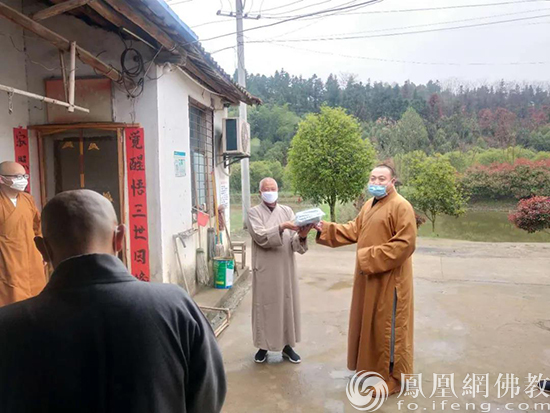
Image source: provided by Master Nengcheng of Buddhism of Phoenix Net.
In view of the practical difficulties faced by Buddhist temples, Master Xinping, the Buddhist Association of Xian ‘an District and Lingshan Charity Foundation carried out the third round of love relay, and raised 120,000 yuan of living materials to help the religious circles and ethnic minorities in Xian ‘an. These materials are donated to the Buddhist, Taoist, Christian and Islamic communities in Xian ‘an. Master Xinping said that religion has sectors, people’s hearts have no boundaries, and love has no boundaries. They are all relatives, and we all have to help. Thanks to Lingshan Charity Foundation and Phoenix Net Buddhism! Grateful to those caring people who donate money.
During the epidemic, the morning bell and the evening bell still sounded, and the official of the temple vegetable garden announced: Welcome to steal vegetables.
At the beginning of the epidemic, all monasteries were required to close the mountain gate and not open to the public. There are no other requirements for life in the temple, and the morning bell and the evening bell still ring in the morning and evening. The lecture was held as scheduled. President Zhengci of the Provincial Buddhist Association proposed that the Buddhist faculty in the province recite the Pharmacologist’s Classic for the country, the people and the patients, and prayed for the Buddha’s mercy to bless all beings and let the disaster recede as soon as possible. Therefore, we all studied the Pharmacologist’s Classic together and returned to all beings in the dharma circle.
At first, the temple went to the temple as usual, and they all lined up to go to the temple and sat down in turn. Later, the provincial Buddhist Association asked not to gather people, especially in Wuhan. Therefore, when eating, everyone queued for food at the wrong peak or far away, and went back to their residence for dinner. In the morning and evening, my homework is also changed to self-study in my room. This is also to avoid group infections. The measures taken by the Provincial Buddhist Association are very timely and effective.
There are 22 places for Buddhist religious activities in Xian ‘an District, and there are more than ten places with teaching staff. During the epidemic period, we monks tried our best to overcome difficulties and not to add trouble to the government. Every time the Buddhist Association asks if any places need assistance, everyone says they do. Indeed, there is a fine tradition in Buddhist places, that is, paying equal attention to agriculture and Zen. Every temple has at least one vegetable field. Usually, some vegetables can be planted to supplement the temple’s permanent life, which can reduce expenses. Temples with land will also grow some crops, such as rice and corn. When the epidemic came, the vegetable fields in the temple played an important role.
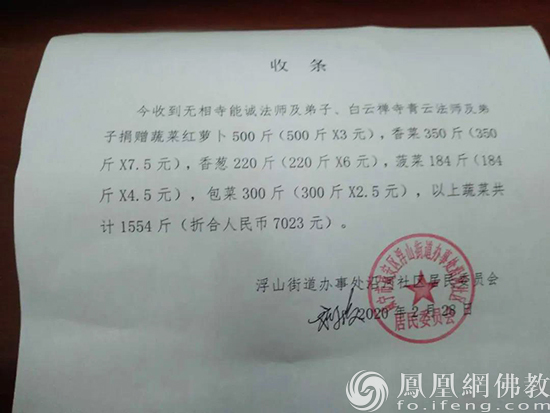
Image source: provided by Master Nengcheng of Buddhism of Phoenix Net.
My Wuxiang Temple has been planting vegetables. There are three vegetable fields in our temple, and this year we planted cauliflower, radish and so on. I once laughed at myself and said that when vegetables were in short supply and shops were closed, it showed how rich I was to have a vegetable field. A large piece of cabbage and rape was planted in a vegetable field far from the temple, and there were not many people in the temple. When the vegetables could not be eaten, they were preserved as pickles. Because this land is beside the road, the vegetables grow beautifully, which I think is very beautiful. During the epidemic, some gourmets help us pick them every day. In order not to let them suffer bad consequences, and to make them eat happily, the masters of the temple wrote a sign on the edge of the vegetable garden, "Please read Amitabha for friends who pick vegetables", which means we welcome "stealing vegetables". This is also a warm episode during the epidemic.
During the epidemic, many lay people are going crazy. What help can we provide?
I can’t forget it. The almost desperate voice on the other end of the phone asked me trembling: Master, will I get COVID-19? This is a female layman, who was in her prime, but she coughed more than a month before the outbreak of the epidemic and stopped taking medicine soon. I don’t know whether it is a recurrent illness or psychological reasons. It didn’t take long to announce the closure of the city in Wuhan. She began to cough again. She was afraid to go to the hospital for examination for fear of cross infection. I have been isolated at home for more than half a month, and my cough is getting worse and worse. The psychological burden is particularly heavy. According to her words, the world is gloomy.
When I learned about this situation, I asked her about it at the first time. Give her positive guidance. Tell her not to be afraid. I’ll try to contact volunteers to help buy the necessary drugs in a non-contact way. And tell her that if she doesn’t get better after taking the medicine, she must go to the hospital for examination. After taking medicine for nearly a week, the cough disappeared. The lay man’s psychological pressure has also been released.
Another layman’s husband was in good condition the night before, but he was a little unwell, and he had been treated with cough at home before. But at about six or seven o’clock the next morning, he died because of difficulty breathing. The layman and his son were finally tested positive for nucleic acid. Due to the limited conditions in Wuhan, the shelter is still under construction. After I understand these conditions, I also suggest that she contact the unit and can go to the shelter for observation and treatment as soon as possible. I always tell her that Buddha disciples should know that life is eight hardships, and the first four are impermanent. After many psychological comforts and guidance, the layman slowly walked out of the pain of losing his loved ones. The epidemic is easy to overcome, but the psychological trauma of healing people may have just begun.
To learn Buddhism is to learn the wisdom of the Buddha, and to practice precepts, determination and wisdom. The present precept is to isolate at home, and the present decision is to relax and believe that the epidemic will be defeated. There are all kinds of information on the internet, both positive and negative, and we should have the wisdom to distinguish them and not be confused. We can correctly face the epidemic situation and suffering in the study of knowing and seeing.
I don’t sing praises for anyone, I only shout for the heroic people.
I wrote this article just to let the public know what a group of "monks" were thinking and doing during the epidemic. In fact, we are only individuals, we are also the babies born by our parents, we also eat grains, and we also have unfinished wishes. At least when we haven’t finished our mission, we also cherish our lives. But as long as the country needs us, the people still need us. We can exchange our lives for peace and give them away.
I’m just the experience and recorder of the event. I only write what I see, hear and think. Because I don’t allow my untruthfulness to turn this record into a beautified past, but I don’t want history to forget these lovely faces because of my laziness. I don’t sing praises for anyone, I only shout for the heroic people, the brave Hubei people and Chinese. I happen for everything to get better. I wish everything will return to the right track as soon as possible, and be safe and happy!
In my eyes, the great virtues of Buddhism in Xianning are all bodhisattvas, and all the magicians are bodhisattvas who keep their doors closed and pray for the safety of all beings. And government officials at all levels and community cadres, like the people, are experiencing life and death. But they bear more tests and dangers than the people. When the secretary of Shuangxiqiao Town visited the epidemic several times, he passed by the temple and asked from a distance if the masters had any difficulties in their lives. Before leaving, he also told us that Buddhist masters, when you usually recite, you should help Xianning and Shuangxi people pray more. Let everyone be safe!
As Master Xin Ping wrote in "Notes on 2020 Anti-epidemic": We are Buddhists and should believe in the power of Buddha and Bodhisattva. The karma is incredible! Love is boundless, and we wait patiently for the sunrise with sweat and fatigue, action and compassion! This day, soon! Today (March 23rd), Wuhan was closed for two months, and "0" was added in Wuhan for several consecutive days. We are one step closer to defeating the virus.
May the motherland be strong, the people live in peace and be lucky at six o’clock! Amitabha!
















